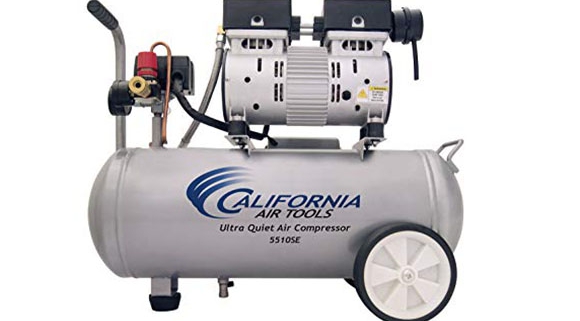Air Compressor
Air Compressor
An Air Compressor is a device that converts power (using an electric motor, diesel or gasoline engine, etc.) into potential energy stored in pressurized air (i.e., compressed air).
By one of several methods, an air compressor forces more and more air into a storage tank, increasing the pressure. When tank pressure reaches its upper limit the air compressor shuts off.
The compressed air, then, is held in the tank until called into use. The energy contained in the compressed air can be used for a variety of applications, utilizing the kinetic energy of the air as it is released and the tank depressurizes.
When tank pressure reaches its lower limit, the air compressor turns on again and re-pressurizes the tank.
There are numerous methods of air compression, divided into either positive-displacement or negative-displacement types.
When air is compressed, it is under pressure greater than that of the normal atmospheric pressure and it characteristically attempts to return to its normal state.
Since energy is required to compress the air, energy is released as the air expands and returns to atmospheric pressure. Air compressors were designed to compress air to higher pressures and harness this potential energy source.
Unlike other sources of power, no conversion from another form of energy such as heat is involved at the point of application. Compressed air or pneumatic devices are therefore characterized by a high power-to-weight or power-to-volume ratio.
Application of Compressor
Air compressors are found in a wide range of environments for an even wider range of uses. You’ll see gas stations offering compressed air to inflate your vehicle’s tires and your tire shop using compressed air with an air tool to remove your tires.
You may have seen small desktop air compressors used with an airbrush or a trailer-style gas-powered air compressor at a construction site powering jackhammers and concrete compactors.
In fact, you’ve likely been around many different kinds of air compressors and didn’t even know it — they may be hidden away in your refrigerator or the HVAC system at your local arena.
- Blowing up balloons or inflatable products
- Adding air to tires on bikes and on vehicles
- Cleaning crevices and tight spaces on equipment or other durable items with directed air pressure
- Painting with an airbrush for small precision projects or on larger surfaces like bikes and the body of vehicles and recreational vehicles
- Using various pneumatic tools for home projects
- Painting vehicles in an auto body shop
- Sanding in an auto body shop or in woodworking
- Making snow at ski hills or for entertainment uses
- Using pneumatic nail guns for roofing
- Providing dental and medical services
- Using pneumatic drills and hammers on construction sites
- Powering various air tools in an automotive repair shop
- Using an air blowgun to clean machinery
- Sandblasting in a machine shop and manufacturing facilities
- Moving feed and grain to and from silos with conveyors
- Glasshouse ventilation systems
- Spraying crops
- Powering dairy machines
- Operating pneumatic material handling equipment
- …..
Compressor Types
Dynamic
- Axial
- Centrifugal
Positive Displacement
1.Rotary
- Screw
- Blower
2.Reciprocating
- Single Acting
- Double Acting




Leave a Reply
Want to join the discussion?Feel free to contribute!